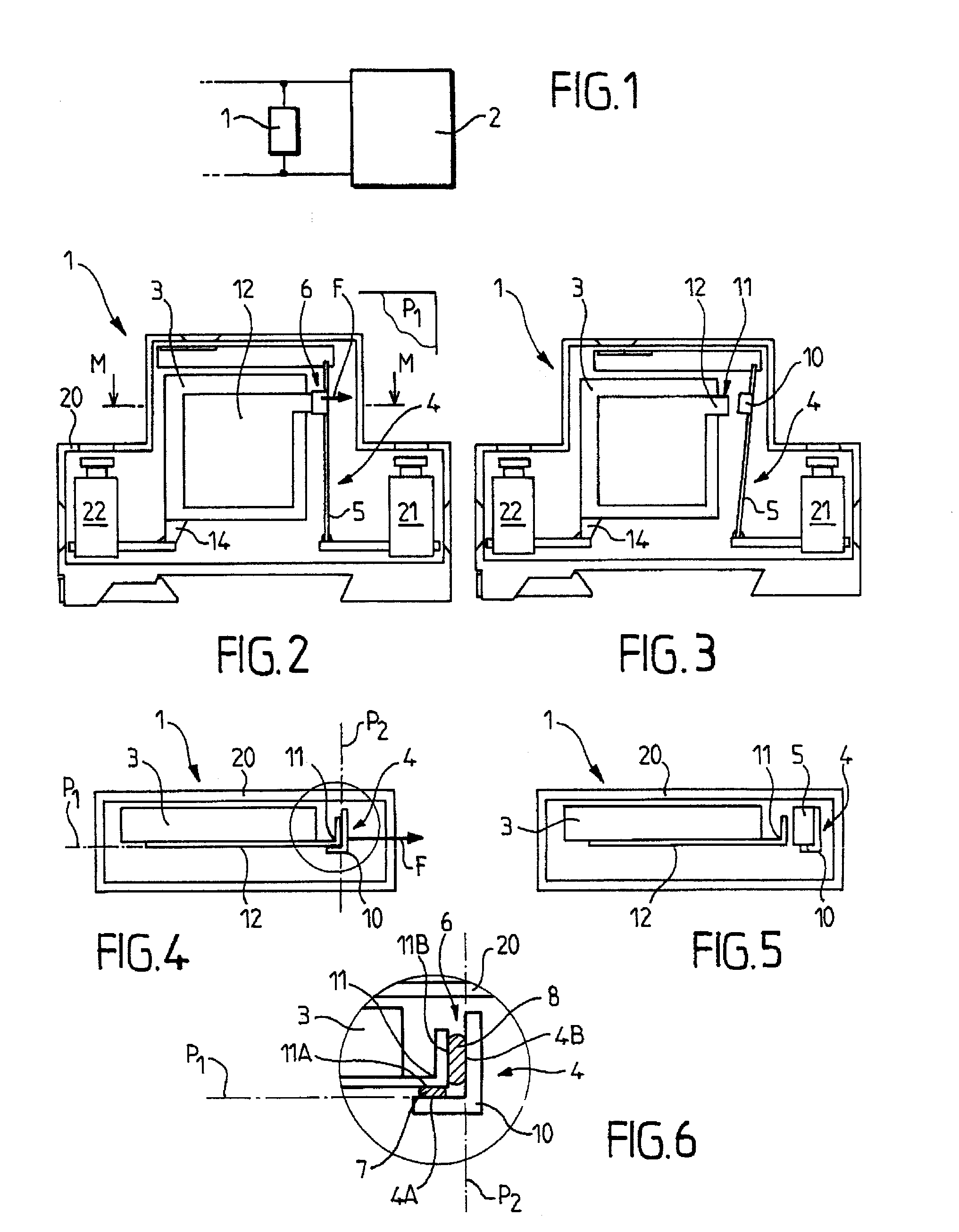Overvoltage protection device with dual contact surface thermal disconnector
a protection device and thermal disconnector technology, applied in the direction of emergency protective arrangements for limiting excess voltage/current, spark gap details, arrangements responsive to excess voltage, etc., can solve the problems of presenting risks to users, serious damage to the installation, and use of certain toxic materials, so as to improve the mechanical strength of the disconnection. , the effect of simple, inexpensive and reliable design
- Summary
- Abstract
- Description
- Claims
- Application Information
AI Technical Summary
Benefits of technology
Problems solved by technology
Method used
Image
Examples
Embodiment Construction
[0029]The device 1 for protecting an electrical installation 2 from overvoltages, according to the present invention, is intended to be shunt-connected (or connected “in parallel”) to the electrical installation 2 in order to protect the electrical installation from overvoltages, as shown in FIG. 1.
[0030]For purposes of the present disclosure, the term “electrical installation” refers to any type of electrically powered apparatus or network capable of undergoing voltage disturbances, in particular transient overvoltages caused by lightning.
[0031]The protection device 1 can advantageously constitute a lightning arrestor.
[0032]The overvoltage protection device 1 according to the present invention is advantageously intended to be placed between a phase of the installation to be protected 2 and the ground. It is also possible to envisage, without going beyond the scope of the present invention, that the device 1, instead of being shunt-connected between a phase and the ground, is connec...
PUM
 Login to View More
Login to View More Abstract
Description
Claims
Application Information
 Login to View More
Login to View More - R&D
- Intellectual Property
- Life Sciences
- Materials
- Tech Scout
- Unparalleled Data Quality
- Higher Quality Content
- 60% Fewer Hallucinations
Browse by: Latest US Patents, China's latest patents, Technical Efficacy Thesaurus, Application Domain, Technology Topic, Popular Technical Reports.
© 2025 PatSnap. All rights reserved.Legal|Privacy policy|Modern Slavery Act Transparency Statement|Sitemap|About US| Contact US: help@patsnap.com



